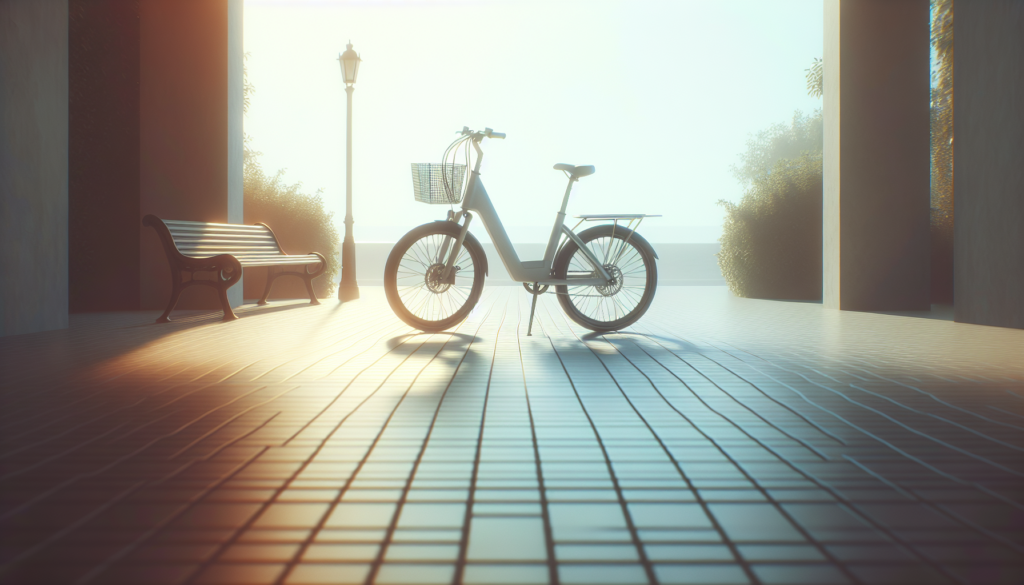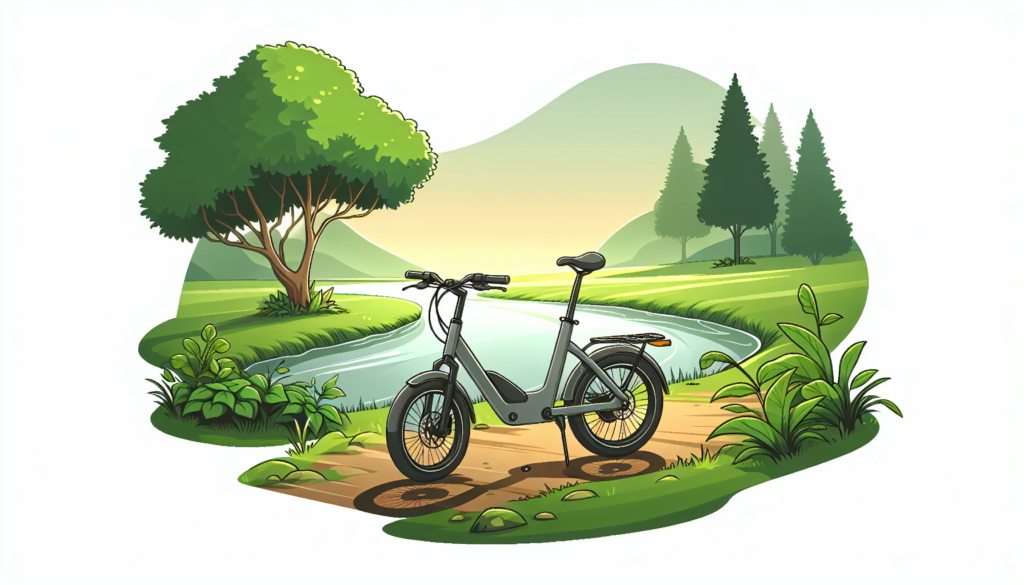
In the rapidly evolving world of electric bikes, two names stand out: the Xiaomi Ebike Himo Z20 and the ADO A20 Lite. Each model presents remarkable features, but what makes the ADO A20 Lite from EKO Life MY particularly compelling is its competitive edge in terms of weight, design, and pricing. Weighing only 16kg, compared to the Xiaomi’s 21.6kg, the ADO A20 Lite offers an impressive balance of functionality and portability, making it a favorite for riders seeking a lighter option.
Both e-bikes are equipped with robust 36V batteries that allow for a range of up to 60km, yet the ADO A20 Lite‘s unique belt system provides a smoother ride, while still maintaining the ability to carry up to 100kg. Priced at RM 3,699, it poses a challenging question: is the ADO A20 Lite the smarter choice for your next adventure? Let’s delve deeper into the specifications and features that set these two remarkable e-bikes apart.
Overview of E-Bike Features
When comparing the Xiaomi Ebike Himo Z20 and the ADO A20 Lite, it is essential to highlight their standout features that cater to various cycling preferences. The Xiaomi Ebike Himo Z20 offers dual electrical assist modes—Dynamic Sports Mode and Cool Mode—making it versatile for different riding experiences. With a robust 36V 10Ah Li-ion battery, this model boasts a range of approximately 60km, while comfortably supporting a max load of 100kg. Weighing in at 21.6kg, the Himo Z20 integrates a chain system and mechanical disc brakes, catering to those who appreciate traditional cycling elements melded with modern technology. It is available at a reasonable price of RM 3,099, making it a compelling option for e-bike enthusiasts.
On the other hand, the ADO A20 Lite also presents a variety of impressive features that make it a strong competitor within the e-bike market. It offers three electrical assist modes tailored for diverse riding styles and is equipped with a slightly lighter 36V 9.6Ah Li-ion battery, yet it achieves a similar range of about 60km. Additionally, the ADO A20 Lite has an impressive weight of just 16kg, allowing for easy maneuverability.
With a max load of 100kg and advanced belt system technology along with mechanical disc brakes, the ADO A20 Lite is priced at RM 3,699. This makes it not only lightweight but also a practical option for daily commuting and leisure cycling, appealing to urban riders who seek efficiency and convenience.
Battery and Range Comparison
When comparing the battery and range capabilities of the ADO A20 Lite and the Xiaomi Ebike Himo Z20, both e-bikes offer impressive specifications that cater to the needs of urban commuters. The Xiaomi Ebike Himo Z20 is equipped with a robust 36V 10Ah Li-ion battery, boasting a maximum range of about 60km. This allows riders to travel longer distances without worrying about running out of power, making it a solid choice for those who need to cover greater ground. Additionally, it has a weight of 21.6kg and features a chain system, ensuring durability during rides under varying conditions.
On the other hand, the ADO A20 Lite stands out with its 36V 9.6Ah Li-ion battery, which also guarantees a range of approximately 60km, similar to Xiaomi’s offering. However, the ADO A20 Lite is notably lighter, weighing in at just 16kg, which enhances its portability and ease of maneuverability. Furthermore, the belt system of the ADO A20 Lite provides a quieter and smoother riding experience compared to traditional chain systems. With a price of RM 3,699, it presents a competitive advantage for those valuing weight and design flexibility in an urban setting.
Weight and Load Capacity Analysis
When comparing the Xiaomi Ebike Himo Z20 and the ADO A20 Lite, weight and load capacity play crucial roles in determining which bike can better cater to varied user needs. The Xiaomi Ebike Himo Z20 weighs in at 21.6kg, significantly heavier than the ADO A20 Lite, which is easy on the scales at just 16kg. This reduced weight in the ADO A20 Lite not only enhances its portability but also facilitates easier maneuverability, making it an ideal choice for urban commuters who frequently deal with crowded spaces or need to carry their bike up stairs.
Both bikes boast the same maximum load capacity of 100kg; however, the lighter ADO A20 Lite can make your ride more enjoyable, especially over longer distances or when navigating inclines. In addition to weight, the design and materials used in each bike’s construction also contribute to their performance and durability. The ADO A20 Lite‘s belt system, for instance, offers a smoother and quieter ride compared to the chain system utilized in the Xiaomi Ebike Himo Z20. This means riders of the ADO A20 Lite can enjoy a more refined cycling experience without the maintenance hassles often associated with chain systems.
Ultimately, while both e-bikes cater to similar price points and functionalities, the ADO A20 Lite‘s weight and construction provide distinct advantages that appeal to modern riders seeking efficiency and convenience.
Design and Build Quality: Chain vs. Belt System
The design and build quality of e-bikes play a crucial role in their overall performance and user experience. The Xiaomi Ebike Himo Z20, constructed with a reliable chain system, offers durability and ease of maintenance, which is a significant consideration for riders who prioritize resilience. Weighing 21.6 kg, the Himo Z20 balances stability and versatility on various terrains, making it a robust choice for urban and rural riding alike. Additionally, the dynamic sports mode and cool mode provide riders with options tailored to their preferred pace, enhancing ride customization. However, its weight may not be ideal for those seeking a lighter model.
On the other hand, the ADO A20 Lite presents a slimmer and more lightweight design, weighing just 16 kg, which greatly enhances its portability. This e-bike features a belt system that is known for minimal maintenance and quieter operation, providing a refined riding experience. The A20 Lite also comes equipped with three electrical assist modes, giving riders flexibility for different scenarios. With a price point of RM 3,699, it stands as a fantastic alternative to the Xiaomi Ebike Himo Z20, especially for those who prefer a lighter, more innovative design without compromising on essential features like battery range and load capacity.
Braking Systems: Mechanical Disc Features

When it comes to the braking systems of the ADO A20 Lite and the Xiaomi Ebike Himo Z20, both models feature mechanical disc brakes, which provide reliable stopping power essential for safety. The mechanical disc brakes are designed to offer superior performance, especially in varied weather conditions, ensuring that riders maintain control during their journeys. The lightweight construction of the ADO A20 Lite, weighing just 16kg, allows for quick maneuverability, making it easier to stop efficiently.
In contrast, the slightly heavier Xiaomi Ebike Himo Z20, at 21.6kg, still benefits from its mechanical disc brakes, but the difference in weight may affect how quickly it can come to a halt compared to its lighter counterpart. This aspect is crucial for riders who prioritize quick and responsive braking in urban environments or hilly terrains. In addition to the importance of weight and materials, the configuration of the braking systems also plays a role in their effectiveness. The mechanical disc brakes on both models ensure consistent performance, even under stress, making them a reliable choice for various riding conditions.
However, the ADO A20 Lite offers a slight edge due to its lighter frame. This combination of a lightweight build and dependable braking technology not only enhances the overall riding experience but also reflects its value for the price, making it a strong contender against the Xiaomi Ebike Himo Z20 in the competitive e-bike market.
Pricing and Value for Money
When evaluating the ADO A20 Lite and the Xiaomi Ebike Himo Z20, pricing and value for money stand out as critical factors for potential buyers. The ADO A20 Lite is priced at RM 3,699, while its competitor, the Xiaomi Ebike Himo Z20, comes in at a slightly lower price of RM 3,099. However, considering the advanced features of the ADO A20 Lite, such as its three electrical assist modes and lighter weight of just 16kg compared to the Himo Z20’s 21.6kg, many may find that the investment in the ADO model provides better value overall.
Both bikes have a similar battery range of approximately 60km, ensuring that users can enjoy extended rides without frequent recharging. The choice between these two models ultimately depends on what specific features and specifications align best with the rider’s preferences and needs.
Choosing the Right Mode: Dynamic Sports vs. Electrical Assist Modes
When it comes to choosing the right mode for your e-bike experience, the ADO A20 Lite offers a significant advantage with its three electrical assist modes. This variety allows riders to select between different levels of assistance, catering to their unique riding style and preferences. Whether you prefer a leisurely ride enjoying the scenery or a more energetic journey, the ADO A20 Lite adapts effortlessly to your needs. With a lightweight design at just 16kg, it promises a nimble feel on the road, further enhancing your riding experience while ensuring you can tackle various terrains with ease.
On the other hand, the Xiaomi Ebike Himo Z20 provides two modes: Dynamic Sports Mode for a more intense experience and Cool Mode for a relaxed ride, appealing to those who appreciate a balance. It has a robust 36V 10Ah Li-ion battery that offers a range of up to 60km, making it a reliable choice for longer distances. However, while the dual modes of the Xiaomi Ebike provide versatility, the ADO A20 Lite‘s multiple assist options give riders more choices and control, highlighting its elegance and adaptability in comparison to the Himo Z20’s more limited mode selection.
Target Audience: Who Should Choose Which E-Bike?
When choosing between the ADO A20 Lite and the Xiaomi Ebike Himo Z20, understanding the target audience for each model is crucial. The ADO A20 Lite, weighing only 16kg, is an excellent choice for urban commuters and casual riders who prioritize weight and portability in their e-biking experience. Its three electrical assist modes allow riders to effortlessly transition between settings based on their environment, making it a versatile option for navigating busy city streets.
With a maximum load of 100kg and a battery capacity of 36V 9.6Ah that can provide a range of about 60km, this e-bike is well-suited for daily errands or leisure rides without the burden of excess weight. A price point of RM 3,699 makes it appealing for those looking for efficiency without breaking the bank.
In contrast, the Xiaomi Ebike Himo Z20, which weighs slightly more at 21.6kg, offers a robust dual electrical assist mode that caters to sportier riders seeking a dynamic cycling experience. Priced at RM 3,099, it provides a solid power output with its 36V 10Ah Li-ion battery and chain system. This model is better suited for those who plan on taking longer rides that may require more power or who prefer a more traditional cycling feel with some added electric assist. Overall, the choice between the two largely depends on personal preferences, lifestyle needs, and budget considerations that define each rider’s e-biking journey.
Final Thoughts: ADO A20 Lite vs. Xiaomi Ebike Himo Z20

In summary, both the Xiaomi Ebike Himo Z20 and the ADO A20 Lite represent compelling options in the e-bike market, each offering unique features and specifications to suit different preferences. While the Himo Z20 boasts a robust dual electrical assist mode, the ADO A20 Lite stands out with its lightweight design and versatile three electrical assist modes. Priced slightly higher, the ADO A20 Lite may appeal more to riders seeking a lighter ride without compromising on range or performance due to its belt system that ensures a smoother pedal experience.
Ultimately, the choice between these two impressive e-bikes will come down to personal priorities. If portability and weight are primary concerns, the ADO A20 Lite shines brightly, offering an optimal balance of features and ease of use. Nevertheless, fans of the Xiaomi brand can still find significant value in the Himo Z20. Regardless of which model you choose, both bikes are designed to elevate your riding experience, making them worthy contenders in the ever-evolving world of e-bikes.

Love the blog’s unique perspective! Would be great to see more articles like this.
Thank you, Nur Hazra Fadilah, for your kind words about our blog! We’re glad you enjoyed the unique perspective. We’ll definitely consider writing more articles like this in the future. If you have any suggestions or topic ideas, please feel free to share them with us. You can reach us at [email protected] or give us a call at +60 3-7890 3042. We’d love to hear from you!
Great content! I’m looking forward to seeing more from this blog.
Thank you, Tai Aiyu Tang! We’re thrilled to receive your feedback. We’re committed to bringing you more engaging and informative content. If you have any specific topics you’d like to see us cover, feel free to share with us. You can reach us at [email protected] or call us at +60 3-7890 3042.
The writing style could be improved, but overall it’s a great start.
Thank you for taking the time to share your feedback, Zulfadhli! We’re glad you found our blog post a great start. We’ll definitely take your suggestion on the writing style into consideration for our future posts. If you have any further suggestions or questions regarding our content, please don’t hesitate to reach out to us at [email protected] or +60 3-7890 3042. We’re here to listen and provide the best possible experience for our readers.